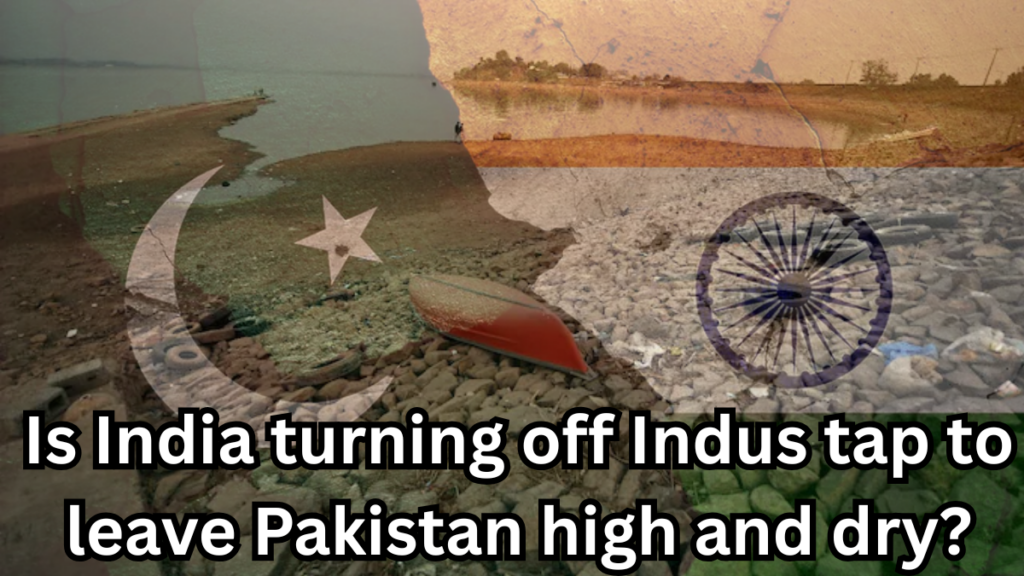India’s Pause on the Indus Waters Treaty and What It Really Means

Quick Snapshot
| What Happened? | Why It Matters | Who Feels It First? | When Will the Pain Hit? |
|---|---|---|---|
| India “suspended” cooperation under the 1960 Indus Waters Treaty after the Pahalgam terror attack. | Water from the six Indus‑system rivers is Pakistan’s irrigation lifeline. | Mostly Pakistan’s Punjab & Sindh farmers (80 % of their river water arrives from India). | Not tomorrow—big dams and diversion works take years, even decades. |
The Treaty in Plain English
-
Signed: September 1960, brokered by the World Bank after 12 years of wrangling.
-
Eastern rivers (Sutlej, Beas, Ravi): 100 % India’s to use—for drinking, farming, hydropower, you name it.
-
Western rivers (Indus, Jhelum, Chenab): Pakistan’s share—about 80 % of its total flow. India may build only “run‑of‑river” power projects that don’t store water.
Think of it as two separate water wallets—India keeps one, Pakistan draws from the other.
Why the Hashtag Storm?
“Pakistan will die of thirst!” screamed posts on X.
Reality check:
-
Psychological Pressure: New Delhi’s message is aimed less at Pakistan’s taps and more at its terror networks.
-
Instant Drought? Nope. Rivers don’t carry on‑off switches, and India lacks the giant reservoirs needed to choke the flow overnight.
-
Ground Truth: Even a 5–10 % cut would require juggling canal gates, not huge dams.
Pakistan’s Water Dependence—By the Numbers
| Indicator | Figure | Why It’s Scary |
|---|---|---|
| Share of food grown in Punjab province | ≈ 85 % | A single bad season ripples into national food prices. |
| Share of GDP from agriculture | ≈ 25 % | Fewer crops → lower exports → shaky forex reserves. |
| Rural population relying on farming | ≈ 70 % | Livelihoods dry up if canals do. |
Karachi already pays private tankers for drinking water; imagine adding crop‑loss panic to the mix.
Can India Really “Turn Off” the Western Rivers?
Short answer: Not before your next smartphone upgrade.
Long answer in three bullets:
-
Treaty Limits: No storage dams allowed—only run‑of‑river plants.
-
New Reservoirs = New Decade: Site studies, clearances, funding, and construction easily push projects past 2030.
-
Ecological Red Tape: Himalaya ecosystems are fragile; litigation alone can stall a dam for years.
So, What’s the Play?
-
Diplomatic Leverage: India signals “Fix the terror problem or we start drafting dam blueprints.”
-
Domestic Optics: Shows firmness without actually starving civilians.
-
Time‑Buy for Both Sides: Islamabad feels the heat to rein in militants; New Delhi buys time to weigh costly infrastructure.
FAQs
Q1: Has India ever blocked Indus water before?
No. Despite past wars, the 1960 treaty survived unbroken—until this symbolic suspension.
Q2: Could India legally walk out completely?
Yes, under the Vienna Convention a state can cite “material breach” (terrorism support) to exit—but expect global pushback.
Q3: How soon would Pakistan’s crops fail if flows dropped 10 %?
Within one planting cycle (≈ 6 months) Punjab’s wheat and Sindh’s rice yields would show stress, raising food‑import bills.
Q4: What could defuse the water standoff fastest?
Credible crackdowns on cross‑border militancy plus back‑channel talks could see India quietly restore full treaty cooperation.
The Bottom Line
India hasn’t shut the faucet—it’s rattling the pipe. The real squeeze is political, not hydraulic (yet). Whether the rivers keep flowing freely depends less on dam engineers and more on diplomats—and, crucially, on Pakistan’s willingness to muzzle the guns that triggered this watery warning.
Click here to learn more
Pari is a passionate writer known for captivating stories that blend imagination and reality. Inspired by travel, history, and everyday moments, Pari crafts narratives that resonate deeply with readers.




